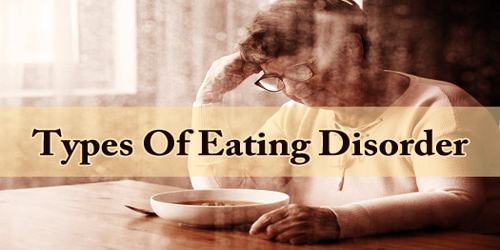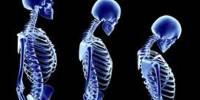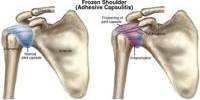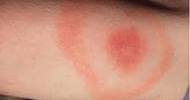Eating disorders are mental health conditions marked by an obsession with food or body shape. They can affect anyone but are most prevalent among young women. Experts believe that eating disorders may be caused by a variety of factors. The causes of eating disorders are not clear, although both biological and environmental factors appear to play a role. Eating disorders affect about 12 percent of dancers. Cultural idealization of thinness is believed to contribute to some eating disorders. Individuals who have experienced sexual abuse are also more likely to develop eating disorders. Some disorders such as pica and rumination disorder occur more often in people with intellectual disabilities. Only one eating disorder can be diagnosed at a given time.
Most eating disorders involve focusing too much on our weight, body shape, and food, leading to dangerous eating behaviors. These behaviors can significantly impact your body’s ability to get appropriate nutrition. Eating disorders can harm the heart, digestive system, bones, and teeth and mouth, and lead to other diseases.
Eating disorders often develop in the teen and young adult years, although they can develop at other ages. With treatment, people can return to healthier eating habits and sometimes reverse serious complications caused by the eating disorder.
The 12 types of eating disorders –
Those included in the ICD and DSM:
Anorexia Nervosa (AN): Experts consider anorexia nervosa to be the most deadly of all mental illnesses because it has the highest mortality rate. For this reason, we can consider it to be the most severe of the 12 types of eating disorders. This condition involves severe food-restriction and sometimes extreme exercising and other purging behaviors. The individual will typically show these signs and symptoms:
- Intense fear of gaining weight, even small amounts are intolerable.
- Losing weight rapidly and consistently staying underweight. Their skinny appearance can be alarming for friends and family.
- Refusal to acknowledge that such a low body weight can have harmful health consequences.
- Amenorrhea: this is a term for when women stop menstruating due to low-fat content.
- Heart damage: anorexia stresses the cardiovascular system and can lead to a variety of life-threatening heart conditions.
Bulimia Nervosa (BN): This condition, bulimia nervosa, occurs when someone is repeatedly binging on large amounts of food and then purging it. Purging behaviors include forcing oneself to throw up, over-exercising, and using diet pills and laxatives. Both binging and purging behaviors are dangerous, and together they can quickly lead to dangerous physical symptoms.
Muscle Dysmorphia: Unlike most types of eating disorders, muscle dysmorphia tends to affect more men than women. The disorder is characterized by a disruptive obsession with musculature and physique. The individual will fixate on obtaining the ‘perfect’ form of musculature.
Binge Eating Disorder (BED): BED is characterized by episodes of binging on large amounts of food. A binge describes when someone consumes an excessive amount of food within a period of two hours. Binges are accompanied by a trance-like state, feeling guilty and ashamed afterward, and weight gain. Unlike bulimia, BED does not usually include any purging behaviors. Typically, those affected by BED are overweight or obese because of the binging.
Other Specified Feeding or Eating Disorder (OSFED): OSFED is a “catch-all” for types of eating disorders that don’t fit into the above categories. Examples of otherwise-specified eating disorders include individuals with atypical anorexia nervosa, who meet all criteria for AN except being underweight despite substantial weight loss; atypical bulimia nervosa, who meet all criteria for BN except that bulimic behaviors are less frequent or have not been ongoing for long enough; purging disorder; and night eating syndrome. Doctors and psychologists will often diagnose those with atypical anorexia or bulimia, as well as the following 7 unofficial diagnoses, with OSFED.
These disorders are not included in any diagnostic manual, but doctors and psychologists still use these terms. Practitioners often group people with these conditions into OSFED, other specified feeding or eating disorder, as the official diagnosis. However, these terms are more specific and can help us communicate more clearly.
- Compulsive Over Eating (COE) – This disorder is similar to binge eating disorder. What makes COE unique is that the individual doesn’t binge in spurts, but rather eats large amounts of food all day long.
- Prader Willi Syndrome – This syndrome, which leads to compulsive eating and obesity, is caused by inherited genetic disease. It begins with weak muscles, poor feeding, and slow development in babies. Then, in childhood, the disease causes insatiable hunger. Children with Prader Willi Syndrome often develop diabetes and struggle to adapt to a normal lifestyle.
- Diabulimia – This occurs when someone who is diabetic uses their prescription insulin to try to induce weight loss.
- Orthorexia Nervosa – It is a term used by Steven Bratman to describe an obsession with a “pure” diet, in which people develop an obsession with avoiding unhealthy foods to the point where it interferes with a person’s life.
- Selective Eating Disorder – This eating disorder is a bit like picky eating, but at an extreme, debilitating level. An individual is so selective about their food, usually sticking to one or two meals, that they become sick.
- Drunkorexia – With a slightly crass sounding name, this term describes an eating disorder that is accompanied by alcoholism as well. The drunkorexic individual restricts food and purges in order to “save calories” for drinking alcohol. Severe malnutrition can develop when drunkorexia goes untreated.
- Pregorexia – Since it is fairly common knowledge that pregnancy leads to weight gain and other bodily changes, so most women go into pregnancy with a weight loss plan. Sometimes, the weight loss plan can be too extreme and can endanger both mom and baby. Pregorexia can lead to low birth weight, coronary heart disease, type 2 diabetes, stroke, hypertension, cardiovascular disease risk, and depression.
Eating disorders result in about 7,000 deaths a year as of 2010, making them mental illnesses with the highest mortality rate. Anorexia has a risk of death that is increased by about 5 fold with 20% of these deaths as a result of suicide. Rates of death in bulemia and other disorders are similar at about a 2 fold increase.
The mortality rate for those with anorexia is 5.4 per 1000 individuals per year. Roughly 1.3 deaths were due to suicide. A person who is or had been in an inpatient setting had a rate of 4.6 deaths per 1000. Of individuals with bulimia about 2 persons per 1000 persons die per year and among those with EDNOS about 3.3 per 1000 people die per year.
The categories above are meant to provide a better understanding of the most common eating disorders and dispel myths about them. Eating disorders are mental health conditions that usually require treatment. They can also be damaging to the body if left untreated. If any people have an eating disorder or know someone that might have one, seek help from a healthcare practitioner that specializes in eating disorders.
Information Sources:
















